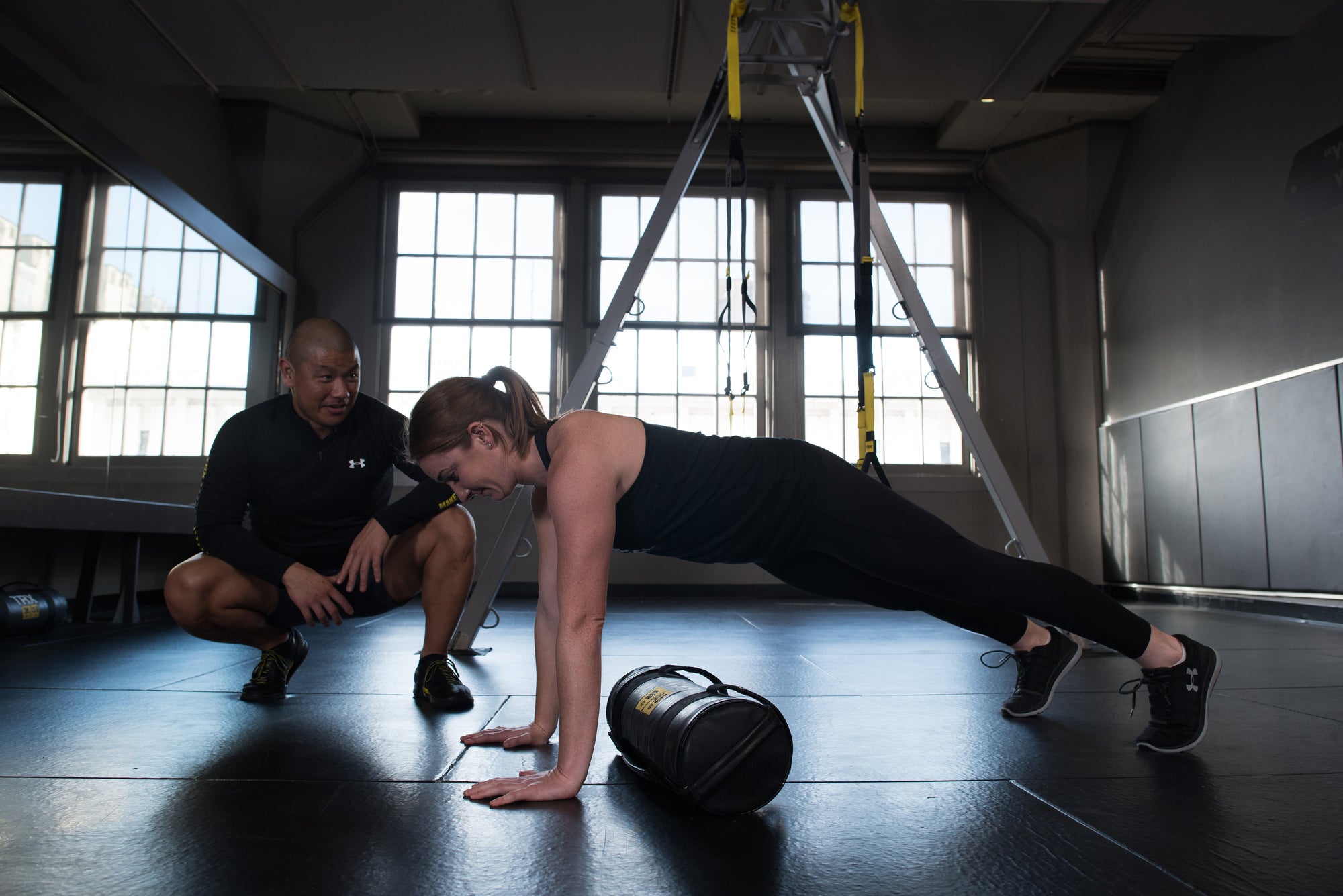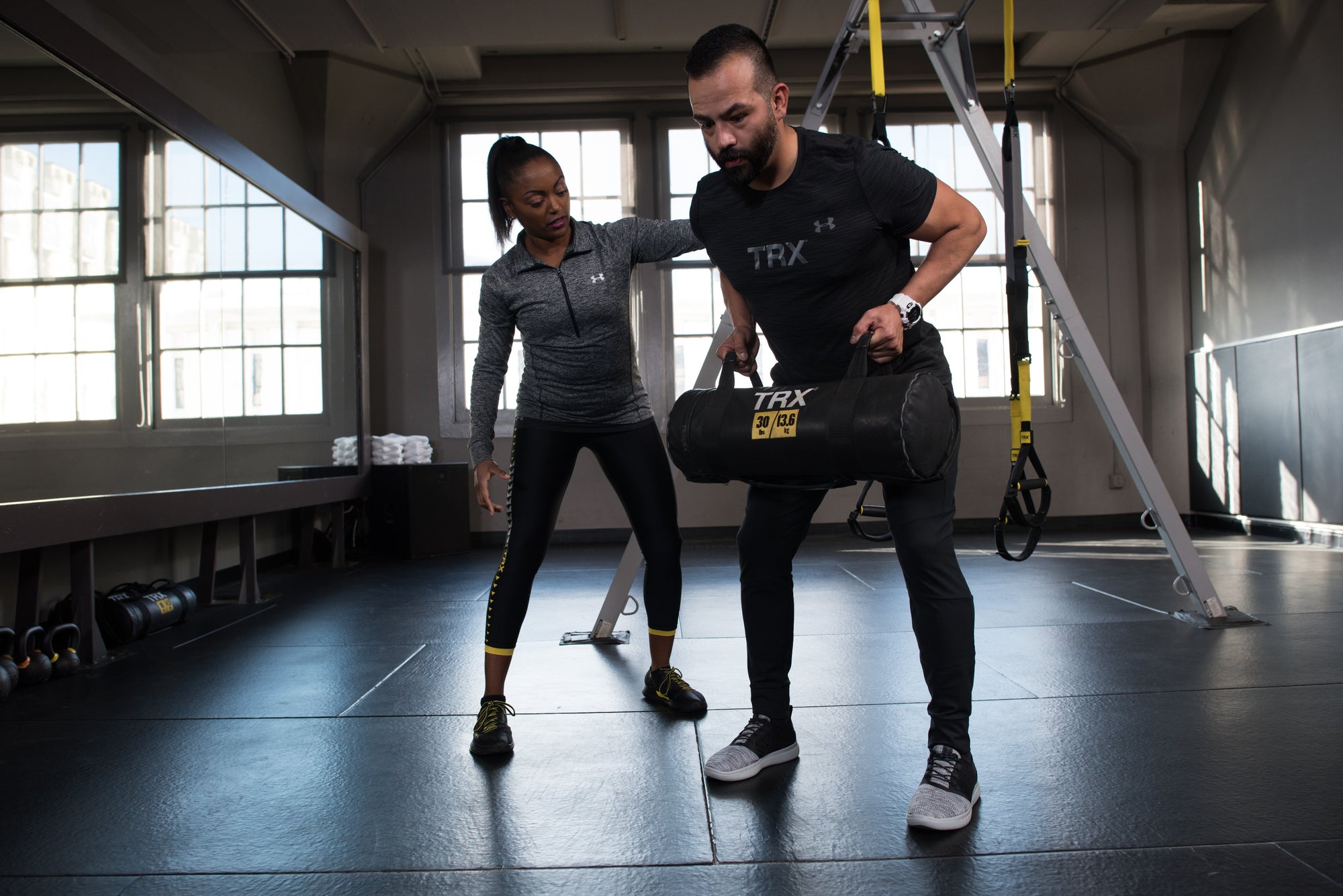ARE YOU INCLUDING ENOUGH UNILATERAL WORK IN YOUR TRAINING?

Gym goers new and old often neglect unilateral exercises yet they are extremely beneficial for all. Everyone should aim to include at least a few, preferably earlier in the workout.
Unilateral exercises are those where you train one side of the body at a time or the exercise requires an asymmetrical stance. My career as a physiotherapist has always directed my coaching with a need to correct muscle imbalances, posture in my clients at the same time as making them strong, mobile and quick when needed.
Don't get me wrong, I love the classic and symmetrical compound lifts: squats, deadlifts, pull ups and presses. They certainly have their place -particularly for getting strong or hitting a greater volume of work over a greater amount of muscle- but what I've found helps my clients especially in the early stages is getting unilateral strength and mobility as equal as possible. The great thing about unilateral exercises is that when it comes to compensations or deficits there is nowhere to hide. Either each side will feel and look the same while performing an exercise, or it won't.
Sometimes a weaker or stiffer side will require more work (reps or sets) if significant weakness is found, however mobility and symmetry will come a long way on its own just by performing unilateral exercises. This is often due to a thing called neuromodulation:
Often a deficit of movement on one side is not solely due to restriction from specific shortened tissues (muscles, ligaments, tendons and fascia), but instead by our own neurological system not having the confidence or experience of allowing particular movement patterns on one side (again, these can be hidden in bilateral exercises).
So just like riding a bike, neurological adaptation will occur and your body will overcome muscle imbalances by learning to control full movement during an asymmetrical or one sided movement.
Be aware that where deficits are long-standing or due to past injuries, further mobilisation of restricted tissues via manual therapy, stretching, foam rolling and/or fascial blading tools will be necessary in addition to unilateral exercises.
The beauty of the TRX system is its function as an extension of calisthenic training: mastering your own body weight as a form of resistance exercise. The TRX allows regression and progression for various exercises in various stages and is why it features heavily in my App delivered training system PR1MEBODY.
Here are 3 of my favourite unilateral TRX exercises to try which will help build strength, balance and symmetry in areas that I commonly see deficits.

- THE TRX SUPERMAN LUNGE
This is a modification of the classic TRX split squat. In this variation, you lower the torso as close to the front thigh and as close to the horizontal plane at the bottom of the movement. The end range hip flexion of the front leg elongates the glutes forcing them to work through a fuller range - This forces your neuromuscular system to work harder in controlling the movement at the end ranges.
This is particularly useful for those that notice their knees fall inwards at the bottom of a squat. Be aware that you need to be conscious of maintaining the arch in your grounded foot if this happens to you.
- Set up one TRX straps at mid calf level and stand facing away from the anchor point.
- Place the back leg in the strap and hop forward slightly: This creates a slight forward angle of the TRX strap, making it easier for your body and back leg to "drift' back with the TRX as you lower keeping the front shin as vertical as possible throughout.
- As you lower your front hip down and back, bend your knee to around 90 degrees while reaching forward with both arms and aiming to lower the chest as close as possible to the front thigh.
- As you raise back-up be careful not to allow your lower back to over arch. Instead concentrate on dragging the back knee forward to align with the front knee. As you do this, you will feel the glutes work hard. Start with a total of 10 reps on each side and repeat for 3 sets.
- THE TRX SINGLE LEG SQUAT
Another great lower-body corrector. The classic pistol squat is one of if not the best lower body exercises for demanding lower body balance and strength at end ranges. Because of this, they are hard to do. Use a TRX to iron out the kinks in each side.
- Set up the TRX straps to mid-length and stand facing towards the anchor point.
- Lift one leg up in front of you, off the ground, with the knee straight. Have the grounded foot pointing towards or slightly out from where the TRX is secured.
- Initiate the squat on the grounded side by first sticking the butt out as if you're going to sit down. As the hips go back, lean the shoulders forward while keeping the back as straight as possible.
- Your knee should start to bend and drive forward over the toes. When you feel the limit of this movement, don't allow your grounded heel to raise off the ground throughout the exercise. Instead, rely on the TRX to hold you upright as you aim to get as low as possible. The goal is to have your calf and hamstring come in contact. If knee pain (or an old knee injury) limit this, only allow the knee bend as far as is comfortable for you.
- Your other leg should still be held out in front of you and not in contact with the ground.
- Initiating the movement back up can be one of the hardest parts so pull/ row on the TRX more in this bottom position to start extending out of the squat position.
Hold only one strap of the TRX with the hand of the non-grounded side. If this is too difficult, hold a TRX strap in each hand. Progress this further by holding a kettlebell in a racked position (resting on the bent elbow and tucked against the shoulder) in the hand of the grounded side, i.e.: the side not holding the TRX strap.
- THE TRX SINGLE ARM SCAPULA PRESS
One of the most common weaknesses or imbalances around the shoulder joint is a weak serratus anterior. This muscle is technically not classified as part of the all-important rotator cuff, yet its dysfunction can be one of the lead causes of rotator cuff issues. Its job is to hold the shoulder blade (scapula) firmly against the rib cage and help it tilt smoothly around the ribcage during shoulder movement. One of the best exercises to train it is a one arm scapula push up from a kneeling position. Upgrade and enhance this exercise using a TRX.
The beauty of using a TRX for this movement is that your body angle can be easily adjusted to make the load or effort increase or decrease. The angle you set the shoulder out from the torso will also change the body angle and difficultly. Train this movement between 90-135 degrees of shoulder flexion from the body. Additionally, the fact you're stabilising on a TRX strap rather than a stable fixed object means your get finer control from the rotator cuff and your serratus anterior is free to move/ wrap around the ribcage in a more natural arc. You also get some great core stabilisation work done at the same time: Just widen the feet to make it easier on the midsection if necessary. See video on my instagram here.
- Stand facing away from the TRX anchor point and shorten the straps to a length that with the arms lengthened out from the body at 90degress your body is angled 45 degrees forward.
- With the non-working arm, hold the other strap alongside the torso loosely. You can use this to brace slightly but don't put any pressure through it. Have the strap on the other side run along the length of the arm and just over the shoulder.
- Keeping the elbow locked straight and the torso stable (don't allow it to rotate), sink into your shoulder blade, but imagine it sucking onto your back as it glides back toward the spine.
- Then push the torso away from the floor smoothly using only the straight arm in front of you. You should feel the shoulder blade wrap around the side of the ribcage. Allow the mid spine to round outwards if necessary. Hold this end position for a count of 3 seconds and then allow the shoulder blade to wrap back around toward the spine again in a controlled fashion. Start with 10reps x 3 sets each arm.
Variation: Raise the arm slightly higher: the strap will no longer be running along the length of the arm and the angle of flexion at the shoulder from the body would have increased. This will be slightly harder but will train the serratus anterior in another functional angle.

About Guest Writer Tim Blakey
Tim is a coach with a background in Physiotherapy who specialises in improving mobility, muscle balance and strength with his clients while guiding them towards their physique goals. His coaching-based App www.pr1mebody.com utilises the most effective gym-based exercises and equipment, including TRX.
INSTAGRAM: @timblakey_pr1me
FACEBOOK: @Pr1mebody
WEBSITE: www.pr1mebody.com



